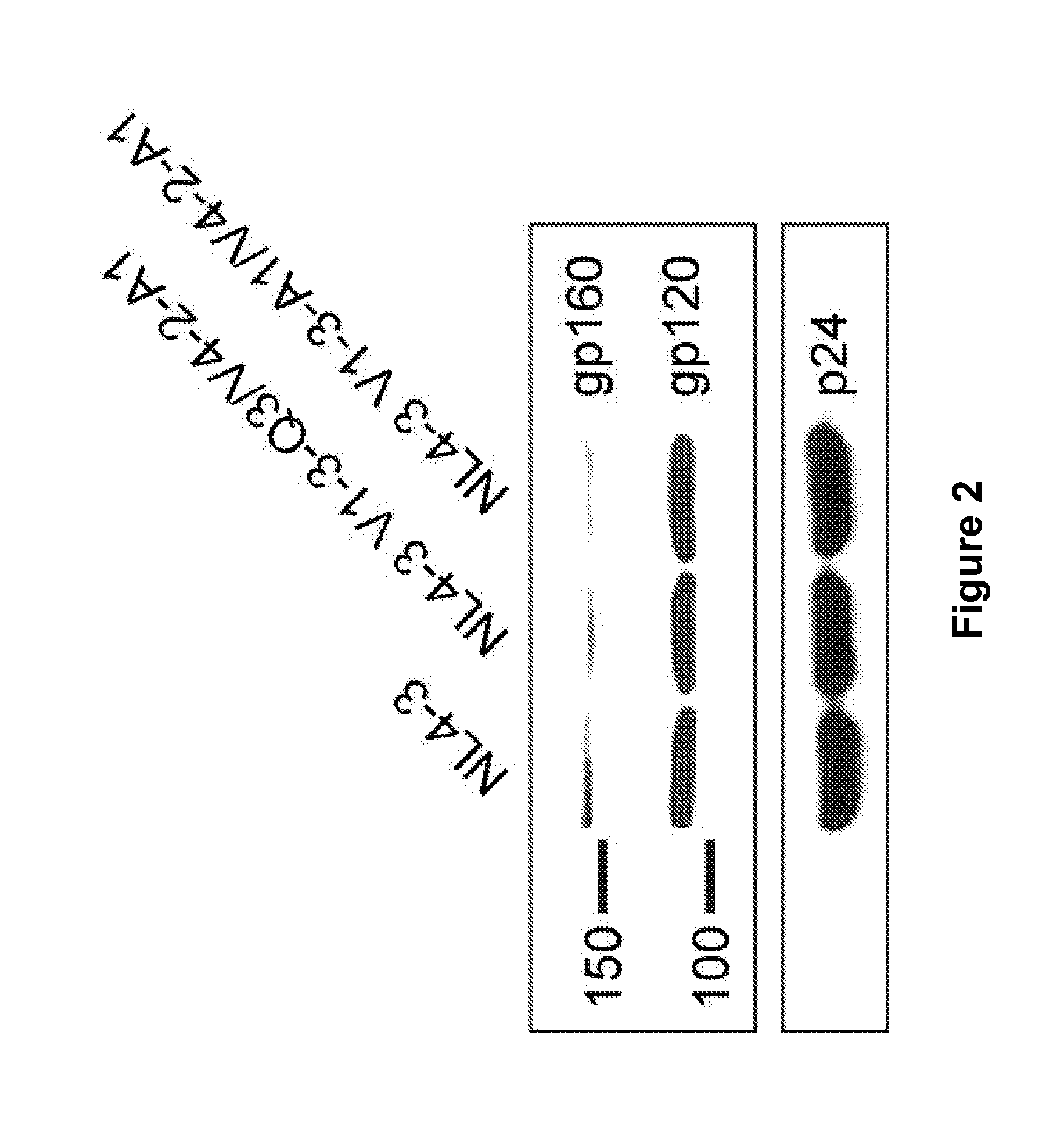Reagents and methods for identifying Anti-HIV compounds
a technology of anti-hiv compounds and reagents, applied in the field of reagents and methods, can solve the problems of high sequence variability, low resolution, and lack of understanding
- Summary
- Abstract
- Description
- Claims
- Application Information
AI Technical Summary
Benefits of technology
Problems solved by technology
Method used
Image
Examples
example 1
Materials and Methods
[0086]Methods Summary
[0087]All HIV-1 virions were generated by transfection of pNL4-3-based plasmids in HEK293T cells. Virus was harvested 24 h post-transfection and concentrated by centrifugation. Dually tagged viruses were site-specifically labelled at each peptide insert simultaneously through incubation with appropriate fluorophore conjugates and labelling enzymes. The viruses were purified away from unbound dye by density-gradient ultracentrifugation. Viruses were immobilized on streptavidin-coated quartz microscope slides, and imaged with a lab-built prism-based TIRF microscope equipped with multiple laser. Donor and acceptor fluorescence were separated with a dichroic filter, and imaged on parallel EMCCD cameras. All analysis was carried out with custom-designed Matlab software.
[0088]Construction and Testing of Tagged Viruses
[0089]All peptides were inserted directly into the gp120 domain of HIV-1NL4-3 using overlap-extension PCR. The infectivity of the mo...
example 2
Establishing smFRET for the X4-Tropic HIV-1 EnvNL4-3
[0099]To establish smFRET for monitoring the conformational dynamics for the X4-tropic HIV-1 EnvNL4-3, several viral and technological challenges were considered and addressed. First, in order to yield new information on HIV-1 Env in the context of the native trimer, full-length pNL4-3 clones were used. The incorporation of a single Env molecule labeled with two dyes into otherwise unlabeled HIV-1 virions was possible by transfecting pNL4-3 plasmid encoding for HIV-1 EnvNL4-3 carrying peptide insertions in the presence of excess (>40-100×) wild-type HIV-1 pNL4-3 plasmid. This ensured that each HIV-1 particle carried maximally one dually labeled Env molecule. Second, the two dyes were placed at positions within gp120 so that changes in the relative distance between the two dyes can report on critical conformational changes induced by receptor and coreceptor binding. Recent electron tomography studies suggested that the trimer is st...
example 3
smFRET Technologies for the Imaging of the R5-Tropic Isolates HIV-1JR-FL, HIV-1BAL and HIV-1KNH1144
[0124]The smFRET methodology described above for X4-tropic HIVNL4-3 is applied to R5-tropic isolates HIV-1JR-FL, HIV-1BAL and HIV-1KNH1144. Labeling peptides such as A1 and Q3 tags can be inserted into the extendable variable loops LV1-V4 of gp120 for site-specific enzymatic labeling. Positions for such insertions can be selected based on structures of the variable loops solved by the Kwong group (McLellan et al. (2011) Nature 480, 336-343; Huang et al. (2005) Science 310, 1025-1028; Huang et al (2007) Science 317, 1930-1934), emerging structures of the HIV-1 Env trimer in the Sodroski and Subramaniam laboratories (White et al. (2010) PLoS Pathog 6, e1001249; Liu et al. (2008) Nature 455, 109-113), and previous insertions into variable loops of gp120 (Xiang et al. (2010) J Virol 84, 3147-3161; Ren et al. (2005) J Virol 79, 5616-5624; Laird et al. (2007) J Virol 81, 10838-10848; Leung ...
PUM
| Property | Measurement | Unit |
|---|---|---|
| Solubility (mass) | aaaaa | aaaaa |
Abstract
Description
Claims
Application Information
 Login to View More
Login to View More - R&D
- Intellectual Property
- Life Sciences
- Materials
- Tech Scout
- Unparalleled Data Quality
- Higher Quality Content
- 60% Fewer Hallucinations
Browse by: Latest US Patents, China's latest patents, Technical Efficacy Thesaurus, Application Domain, Technology Topic, Popular Technical Reports.
© 2025 PatSnap. All rights reserved.Legal|Privacy policy|Modern Slavery Act Transparency Statement|Sitemap|About US| Contact US: help@patsnap.com



